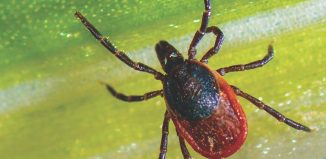Migraine prevention is the second part of the puzzle
Reducing the risk is 90 percent of the battle in dealing with this debilitating condition
In last week’s article, I talked about treatment of the acute (sudden or rapid onset) migraine. Treatment, however, is only one part of the puzzle. The other is prevention.
There are many problems with treating acute migraine attacks beyond the obvious patient suffering. Eventually, patients may increase tolerance to drugs, needing more and more medication until they reach the maximum allowed.
There are also rebound migraines that occur from using medication too frequently — more than 10 days in the month — including with acetaminophen (Tylenol) and NSAIDs (Headache. 2006;46 Suppl 4:S202).
Beyond treating the acute migraine episode, what should a patient do? There are several options for preventive paradigms, some of which include medication, supplements, alternative therapies and dietary approaches.
Medication’s role
There are several classes of medications that act as a prophylaxis for episodic ( less than 15 days per month) migraines. These include blood pressure and antiseizure medications, botulinum toxin (botox) and antidepressants (uptodate.com).
Blood pressure control itself reduces the occurrence of headaches (Circulation. 2005;112(15):2301). The data is strongest for beta blockers. Propranolol, a beta blocker, has shown significant results as a prophylaxis in a meta-analysis (group of studies) involving 58 studies where propranolol was compared to placebo or compared to other drugs (Cochrane Database Syst Rev. 2004). However, it showed only short-term effects. Also, there were a substantial number of dropouts from the studies.
Topiramate, an antiseizure medication, showed a significant effect compared to placebo in reducing migraine frequency (JAMA. 2004;291(8):965-973). In a randomized control trial that lasted six months, there was a dose-response curve; the higher the dose, the greater the effect of the drug as a prophylaxis. However, drugs come with side effects: fatigue, nausea, numbness and tingling. Due to a 30 percent withdrawal rate at the 200 mg dose due to side effects, the highest recommended dose is 100 mg (CMAJ. 2010;182(7):E269).
Botulinum toxin type A injection has not been shown to be beneficial for preventive treatment of episodic migraines, but has recently been approved for use as a prophylaxis in chronic (greater than 15 days per month) migraines. However propranolol, mentioned already, has shown better results with fewer adverse effects (Prescrire Int. 2011 Dec;20(122):287-90).
Alternative approaches
Butterbur, a herb from the Butterbur (Petasites hybridus) root, was beneficial in a four-month RCT for the prevention of migraine (Neurology. 2004;63(12):2240). The 150 mg dose, given in two 75 mg increments, reduced the frequency of migraine attacks by almost twofold compared to placebo. This herb was well tolerated, with burping the most frequent side effect. Only Petasites’ commercial form should be ingested; the plant contains pyrrolizidine alkaloids, which may be a carcinogen and seriously damage the liver.
Feverfew, which I mentioned previously for migraine treatment, had mixed prophylaxis results. In a meta-analysis, the authors concluded that feverfew was not more beneficial than placebo (Cochrane Database Syst Rev. 2004)
The caveat with herbal medications is that their safety is not regulated by the FDA.
Supplements
High-dose riboflavin, also known as vitamin B2, may be an effective preventive measure. In a small RCT, 400 mg of riboflavin decreased the frequency of migraine attacks significantly more than placebo (Neurology. 1998 Feb;50(2):466-70). The number of days patients had migraines also decreased. The side effects were mild for both placebo and riboflavin. Thus, this has potential as a prophylaxis, though the trial, like most of those mentioned above, was relatively short.
Dietary approach
From my experience and those of my esteemed colleagues, such as Joel Fuhrman, M.D., and Neal Bernard, M.D., nutrient-dense foods are potentially important in substantially reducing the risk of migraine recurrence. I have seen many patients, both in my practice and in the three years I worked with Dr. Fuhrman, do much better, if not recover. There are a number of foods that are unlikely to cause migraine and reduce their occurrence, such as cooked green, orange and yellow vegetables, some fruits — though not citrus fruits — certain nuts, beans and brown rice. The number of foods can be expanded over time.
Interestingly, endogenous (from within the body) and exogenous (from outside the body, such as preservatives) toxins cause high levels of free fatty acids and blood lipids that are triggers for migraine (J Women’s Health Gend Based Med. 1999;8(5): 623-630). Higher fat diets and high levels of animal protein have been associated with more migraines. Obesity may also increase the frequency and severity of migraines (Obes Rev. 2011 May;12(5):e362-71).
Thus, there are several options for preventing migraines. The most well studied are medications, however, the most effective may be dietary changes, which don’t precipitate the rebound migraines that medication overuse may cause.
Dr. Dunaief is a speaker, author and local lifestyle medicine physician focusing on the integration of medicine, nutrition, fitness and stress management. For further information, go to the website www.medicalcompassmd.com and/or consult your personal physician.






